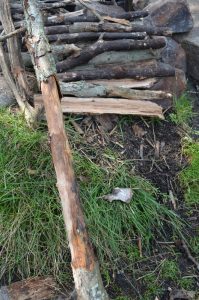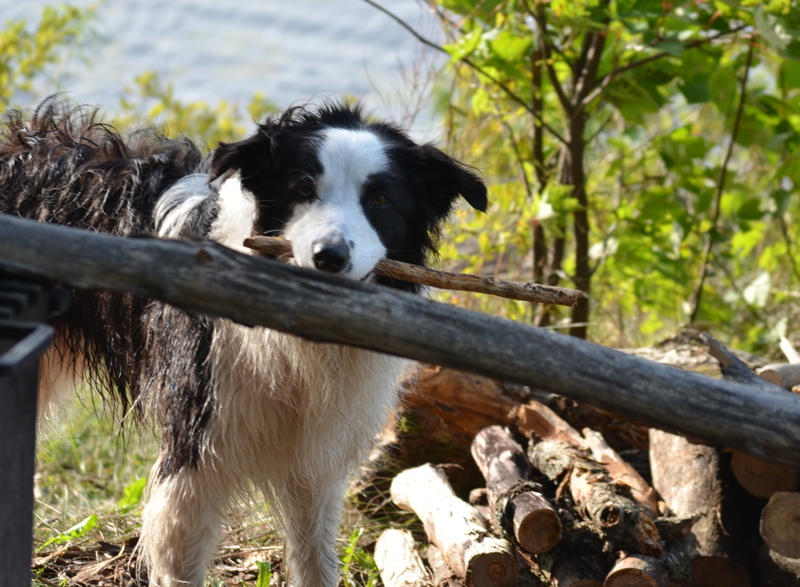 We see it all the time, people cutting live trees to burn. Green wood (freshly cut) does not burn, it smolders and smokes. So unless you like smoked marshmallows, you don’t want to use green wood.
We see it all the time, people cutting live trees to burn. Green wood (freshly cut) does not burn, it smolders and smokes. So unless you like smoked marshmallows, you don’t want to use green wood.
If green wood doesn’t burn, and cutting live trees damages the forest for future generations, why do it?
We have asked ourselves that for years and the only explanation we can come up with is that people don’t know. In rare cases people are willfully destructive (see our post about our Serpentine Lake Trip), but that is not usually the case.
A Few Tips
 Walk back into the woods, go beyond where everyone else has gone to collect firewood. If you have a saw, take it with you. Make sure you pay attention to where you are going. Ideally, go with a friend.
Walk back into the woods, go beyond where everyone else has gone to collect firewood. If you have a saw, take it with you. Make sure you pay attention to where you are going. Ideally, go with a friend.
Look for standing dead trees. If trees are on the ground, they are often ‘punky’ which means they are soft and rotting from moisture. Punky wood won’t burn well.
If the branch or small tree is still standing, or it is leaning against another tree or rock, that is best. Some wood will have moss growing on the surface, but may still be good to burn if the centre is solid.
Find small hardwood branches; the ideal size is 2-3 inches in diameter – although you will need a variety of sizes. Small trees are easy to bring out, easy to cut and they burn well without being split. Look for wood without the bark or with the bark coming off.
Softwood – coniferous trees – do not burn well and they don’t leave any coals so they are not good for marshmallows. You want to look for hardwood. Oak is good – it is a bit harder to get started because it is very dense wood, but once it is going it will burn hot and slow. Maple is my favorite and easier to cut. Birch isn’t ideal because the bark holds the water and it is usually punky.
Once you have the wood cut, cover it with a small tarp or a piece of plastic, so it is protected on rainy days. You can also store it under the picnic table if you are lucky enough to have one on your site.
There really is so much good burning wood you don’t need to cut trees or branches. You will only get frustrated burning green wood, evergreens or large logs. Keeping the fire small is economical and safer.
If you can, leave a bit of wood for the next group in case they arrive late. Trust me, it is much appreciated.
We have a dog who knows the best sticks, he finds sticks that are the right size, with loose bark and he drags them out to the trail. The challenge is keeping him out of our pile of cut wood.

